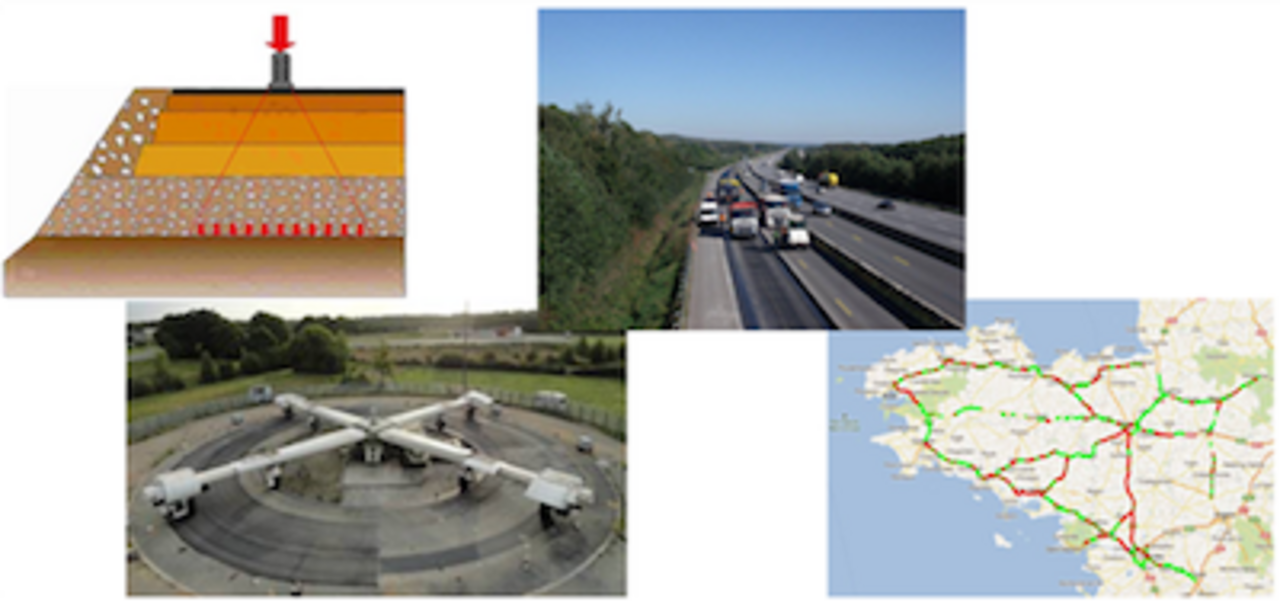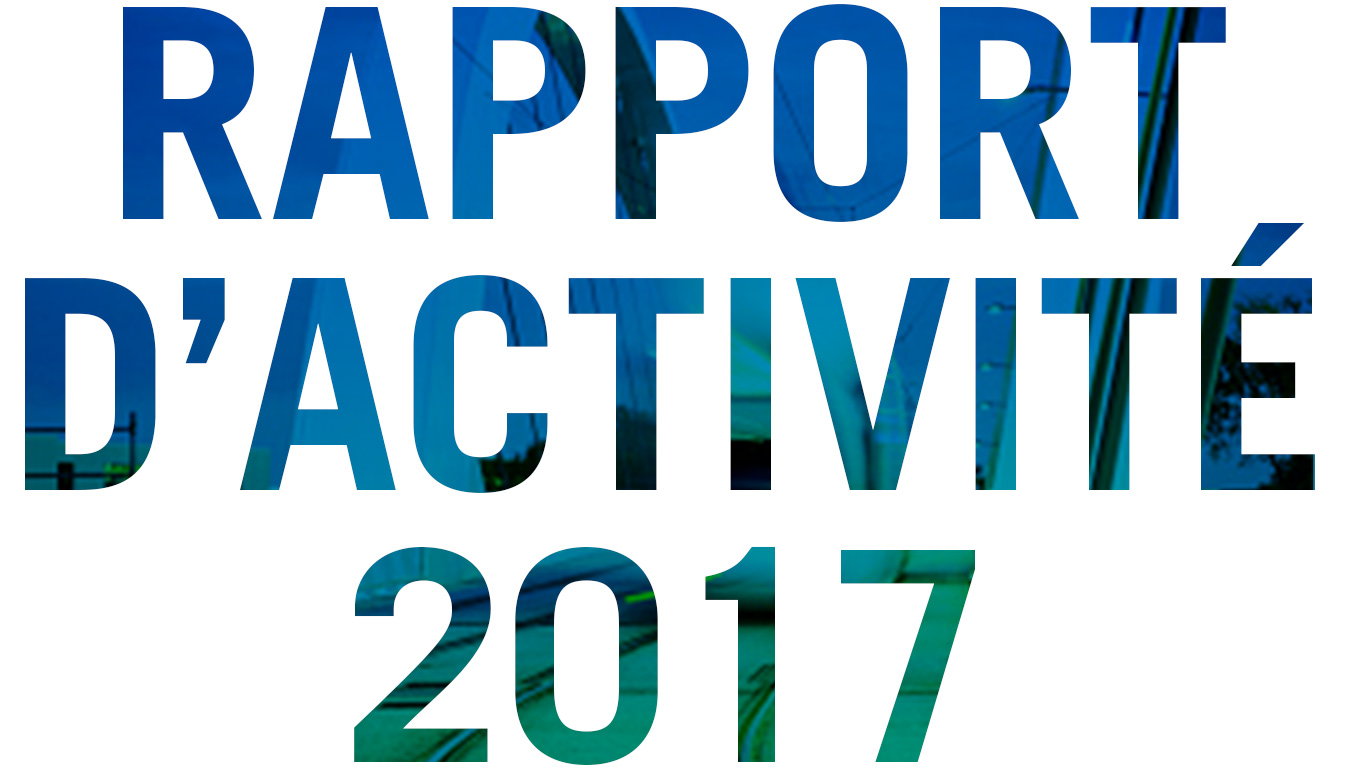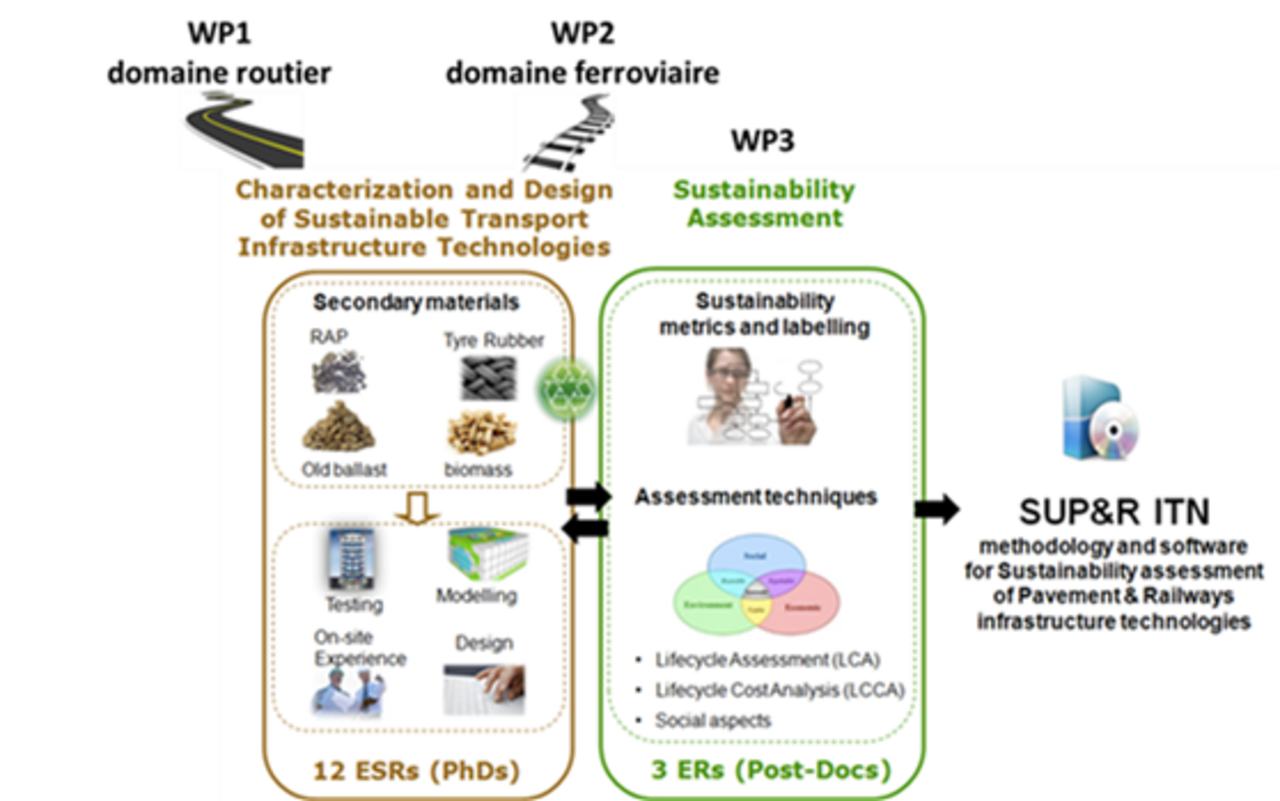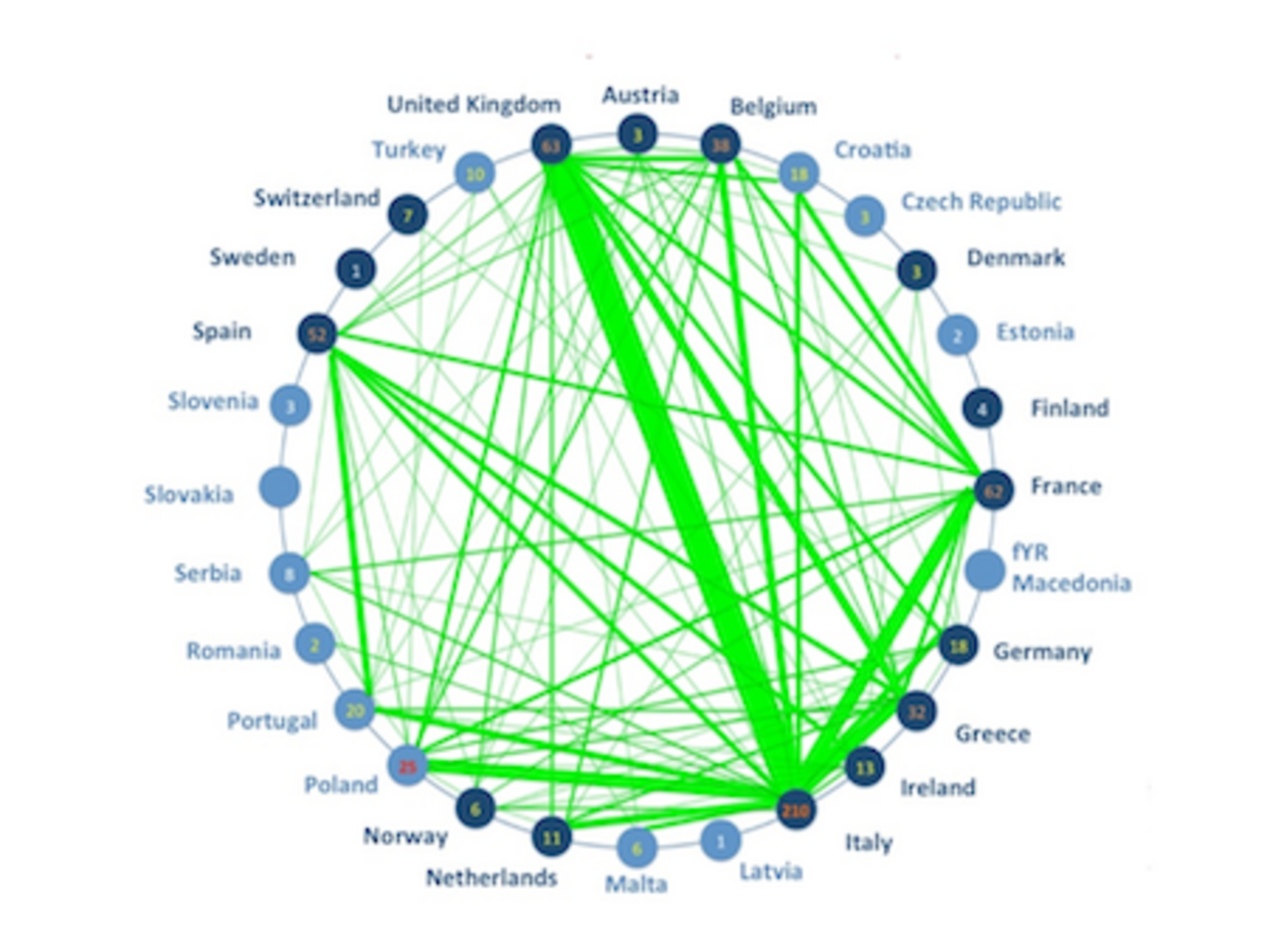Adapting infrastructure
The main body of research concluded in 2017 is aimed at adapting infrastructure to climate change and new operating and maintenance requirements at the lowest possible cost, through better knowledge of the ageing mechanisms of structures and the development of improved monitoring, evaluation and maintenance methods.
SUP&R ITN: an international project to increase the lifespan of bridges
The European SUP&R ITN project has helped develop innovations intended to extend the lifespan of infrastructure without decreasing its structural reliability. This project was concluded in 2017 and enabled IFSTTAR to take on 3 PhD students and release 6 publications and a software package for road and rail applications.
Coordinated by the University of Nottingham (UNOTT), the SUP&R ITN project (The Sustainable Pavements & Railways Initial Training Network) was submitted in 2013 in response to the FP7 PEOPLE ITN call for projects. It has made it possible to recruit 13 PhD students and 3 post-docs on topics related to the design, construction, maintenance, sustainability and environmental assessment of road and rail infrastructure. The main partners working with UNOTT were the Universities of Palermo, Dublin, Huelva and Granada, and the companies SACYR, REPSOL, Irish Rail and URS. IFSTTAR worked on the road component with a PhD student focusing on the durability of low-temperature asphalt mixes incorporating recycled materials (MIT/MAST) and on the environmental assessment component with a postdoctoral researcher working on life cycle analysis tools (EASE/AME). The total budget of the project was €4 million of which IFSTTAR received €0.5 million. The MIT laboratory (MAST) also temporarily took on 3 PhD students on the resistance to cracking of mixes made with plant-based binders, warm mix binders and the modelling of rubberized mixes for railway applications. Launched in October 2013, the project was terminated in October 2017. The provisional output statement reports 50 publications including 6 from IFSTTAR as well as environmental assessment software (the SUP&R ITN MCDA Tool), all available on the project website.
DEDIR : du Dimensionnement à l’Entretien Durable des Infrastructures Routières
DEDIR (IFSTTAR/CEREMA) is a pivotal project research that has contributed to the development of new high-performance instrumentation and non-destructive testing methods, which are essential for improving the diagnosis and the well-considered maintenance of the road network.
DEDIR is jointly led by IFSTTAR and CEREMA, with the goal of optimising the use of the resources available for the maintenance and preservation of road assets. Organised around seven topics, this research programme covers a wide spectrum of topics and has generated several types of deliverable: models, methodologies, software, demonstrators, and articles. New models for predicting pavement damage (cracking) have been developed, and new methods for testing and diagnosing pavement structures have been investigated. Simpler and more modern surface testing devices have also been developed and are attracting great interest within the highways industry. Network management is made easier by new operating and database management software. With regard to pavement reinforcement, the use of geo-grids in structures was tested and evaluated on the circular test track. A more accurate characterisation of heavy goods vehicle traffic and its impact on pavements was also carried out.
These new methods and the associated software were presented at IFSTTAR's Nantes site on 17 May 2018.
Some of these activities will be continued within the framework of various projects or partnerships such as the national DVDC project (pavement lifespan) or various agreements with the highways industry (managers, contractors, etc.).

COST-GPR TU 1208: Civil engineering applications of Ground Penetrating Radar
The diagnosis of ageing infrastructure and the development of innovative non-destructive testing methods were central to the research carried out with the European Commission’s support in the framework of the COST GPR TU 1208 action. This action focused on the exchange of scientific and technical knowledge on Civil Engineering Applications of Ground Penetrating Radar (GPR). The action aimed to set up and reinforce working links between universities, research institutes and industry in the field of GPR. It brought together some 150 institutions from 28 member countries.
The action covers four areas:
• radar instrumentation,
• civil engineering applications,
• the modelling, processing and inversion of radar signals,
• synergy between different non-destructive testing methods for civil engineering.
The action has produced a large body of publications and other output: 16 training courses, 38 short scientific visits, 2 books, 4 guides, 1 catalogue, 125 papers in peer-reviewed scientific journals and 472 papers at international conferences. The action also led to the creation of the TU1208 GPR association and a scientific journal Ground Penetrating Radar - ISSN: 2533-3100.
IFSTTAR was involved in this action through the participation of three researchers, one of whom was X. Derobert, who co-led COST Axis 2 and the writing of 3 technical guides on the detection of underground networks in urban sites, the non-destructive testing of flexible pavement structures and the use of radar technology to assess concrete structures.
The Clerval VIPP beam project
In the field of engineering structures, the CEREMA award was given to the "Clerval VIPP beam" project on the analysis and certification of an effective repair method for a widespread type of structure whose ageing is critical.
Several theses on the durability of traditional or innovative cementitious materials and on the electrochemical and mechanical analysis of reinforced concrete have resulted in significant progress for the corrosion assessment of reinforced concrete structures and their reinforcing bars as well as the optimisation of maintenance. The new methods for preventing damage feature in French and European standards, and in recommendations published in 2017 for preventing the internal sulphate reaction in concrete, with a new performance test that targets hydrogen sulphide attack in wastewater treatment plants.



